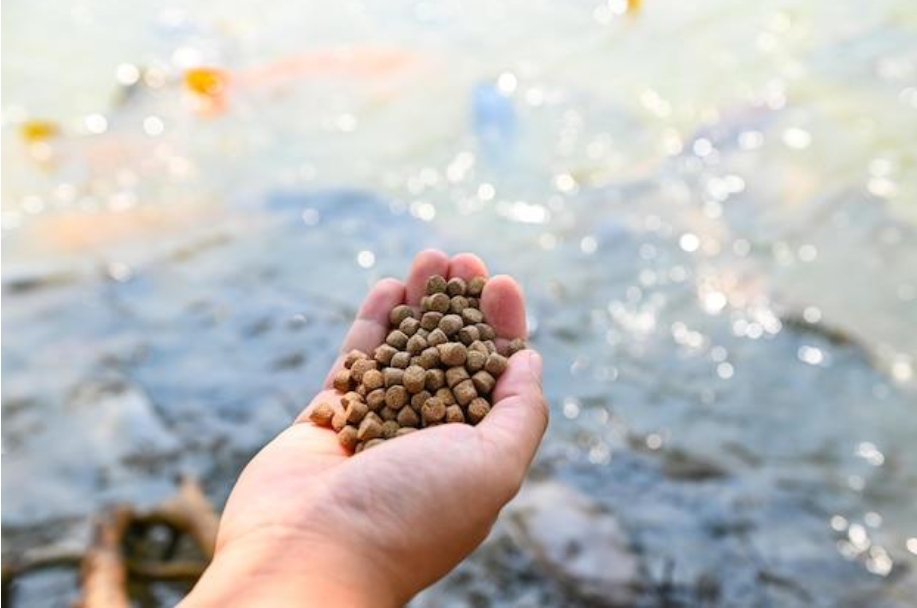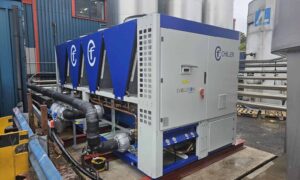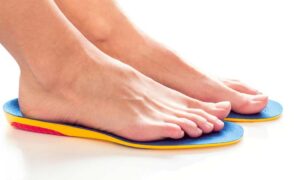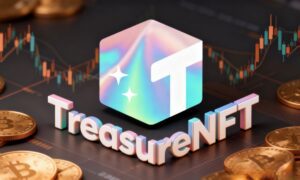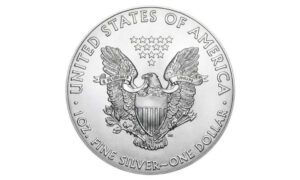Proper nutrition lays the foundation for strong fish health, consistent growth, and reliable aquaculture performance. Without the right balance of nutrients, fish are more likely to suffer from disease, experience slow development, and fall short of their genetic potential.
Apart from affecting individual fish health, improper nutrition drags down the productivity and efficiency of entire aquaculture operations. That is why understanding the different types of fish feed is important to optimize feeding strategies without compromising environmental sustainability.
Lets see what are the different types of fish feed as well as their pros and cons!
Main Types of Fish Feed
So what is fish feed made of? Basically, there are five types of fish pellets such as:
Floating Pellets (Extruded Feed)
Floating pellets, produced through high-pressure extrusion, are designed to stay at the surface of water, which makes them perfect for surface-feeding species like tilapia and trout. They allow easy monitoring of feeding behavior and help prevent feed wastage. However, they usually come at a higher production cost and may not suit bottom feeders. If uneaten, these pellets can contribute to surface water issues, requiring careful feeding management.
Sinking Pellets
Sinking pellets are formulated to descend through the water column, and feed species that eat at mid or bottom levels such as catfish and carp. They help distribute feeding more evenly and are generally less expensive than floating feeds. On the downside, it becomes harder to track how much feed is actually consumed, and uneaten pellets can accumulate at the bottom, potentially impacting water quality if not managed properly.
Flake Feed
Flake fish feed is one of the popular types of fish feed and remains a go-to choice for small fish and home aquariums due to its ease of storage, handling, and adaptability to different species’ diets. It works especially well for young and smaller fish that feed near the surface. However, flakes usually start to lose their nutritional benefits pretty fast when they come into contact with water and are less suited for larger, more aggressive feeders or bottom-dwelling species that might miss out during feeding.
Live/Frozen Feed
Live and frozen feed such as bloodworms, brine shrimp and daphnia offer high nutritional value and closely mimic the natural diet of many species. They are particularly valuable in breeding programs and for finicky fishes that do not consume processed feeds. Despite these benefits, live or frozen feed requires proper handling to prevent the spread of diseases and are typically more costly and labor-intensive than dry feed.
Gel-Based Feed
Other types of fish feed include gel-based feed that is gaining popularity for its customizability and high digestibility. It allows specific nutrient formulations to be designed for particular fish species or life stages, reducing waste and promoting better health. However, it demands more preparation time compared to dry feeds and generally has a shorter shelf life unless frozen. Some fish may also take time to adjust to its softer texture if they are accustomed to pellets or flakes.
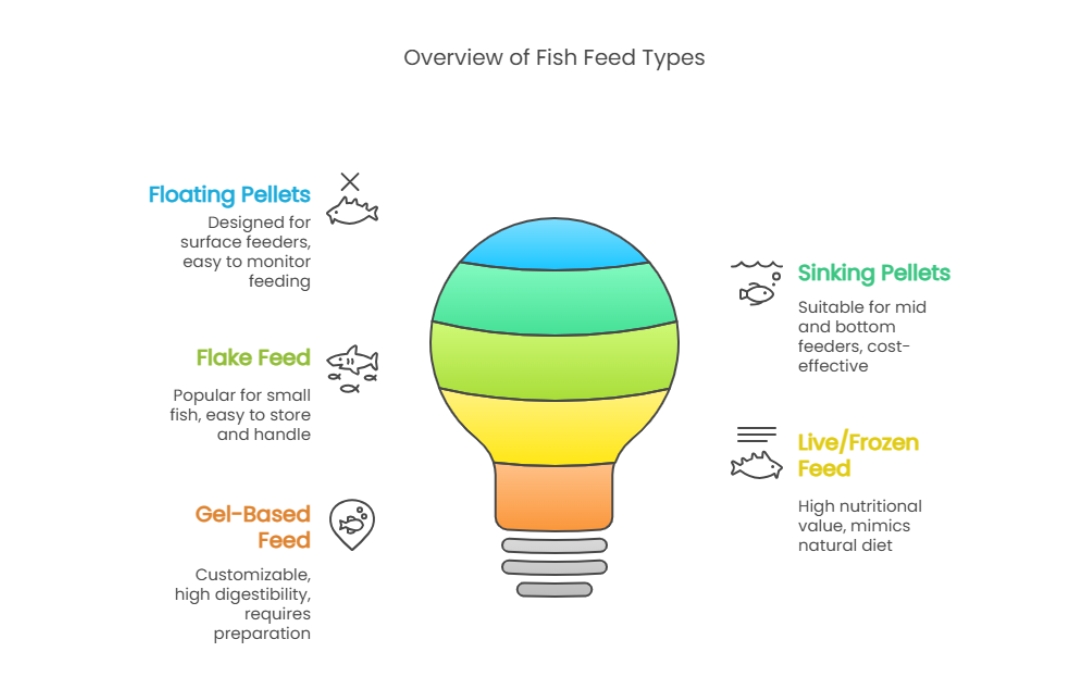
Key Considerations When Choosing Fish Feed
All the types of fish feed differ in their nutritional qualities. Let’s see what are some key factors you need to consider while choosing fish feed.
Nutritional Requirements by Species
Not all fish share the same dietary needs, and overlooking species-specific requirements often leads to poor growth, weakened immunity, and higher mortality. Carnivorous fish demand protein-rich diets, herbivorous fish thrive on fiber-heavy plant ingredients, and omnivores require a balanced mix of both.
Water Ecosystem Impact
The impact of fish feed directly influences the surrounding water quality. Uneaten feed, poorly digestible ingredients, or excessive feeding can cause nutrient buildup, triggering problems like algal blooms, oxygen depletion, and water toxicity. These environmental stresses not only harm fish but also threaten the long-term stability of aquaculture systems.
Feed Conversion Ratio (FCR) Importance
Feed Conversion Ratio (FCR) measures how efficiently fish convert feed into body mass, and it remains one of the most important performance indicators in aquaculture. A lower FCR means less feed is needed to produce a kilogram of fish, which translates into cost savings and reduced waste. High-quality feeds tailored to species-specific digestion can dramatically improve FCR, resulting in faster growth, healthier fish, and more sustainable operations.
Sustainability Factors
Sustainability is becoming a defining factor in modern aquaculture, and feed choices play a major role in shaping environmental footprints. While traditional fishmeal and fish oil sources are effective, they rely heavily on wild fish stocks, which puts pressure on marine ecosystems. Emerging alternatives like plant proteins, insect-based ingredients, and algae-derived oils offer more sustainable options without sacrificing nutritional quality.
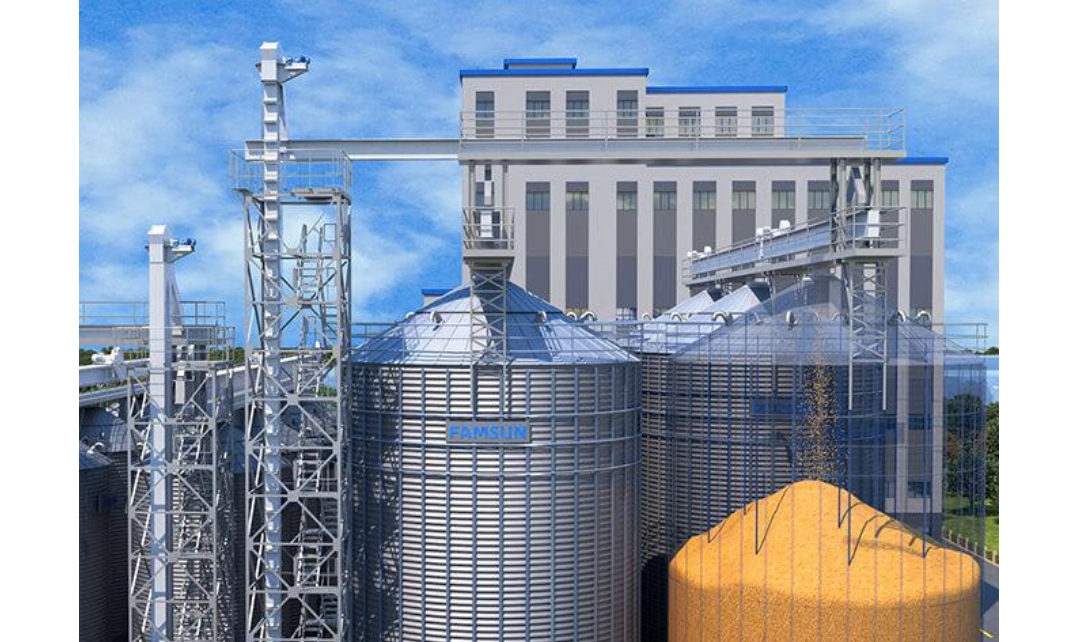
FAMSUN’s Aquafeed Solution
FAMSUN provides advanced aquafeed solutions that support modern aquaculture’s evolving needs. They combine innovative extrusion technologies with intelligent digital systems to enable the production of both floating and sinking fish feeds with high nutritional quality and operational efficiency. Their focus on automation, traceability, and energy-efficient processes helps aquaculture businesses improve feed performance while reducing waste and environmental impact.
Across different regions, FAMSUN has successfully delivered integrated feed production projects that feature smart manufacturing systems, optimized feed formulations, and fully automated packaging and palletizing lines.
Through their investment in research, digitalization, and sustainable practices, FAMSUN continues to drive improvements in aquafeed production, helping partners achieve higher yields, better profitability, and a reduced environmental footprint. Visit FAMSUN’s website today and speak with their experts for advanced aquafeed solutions!

